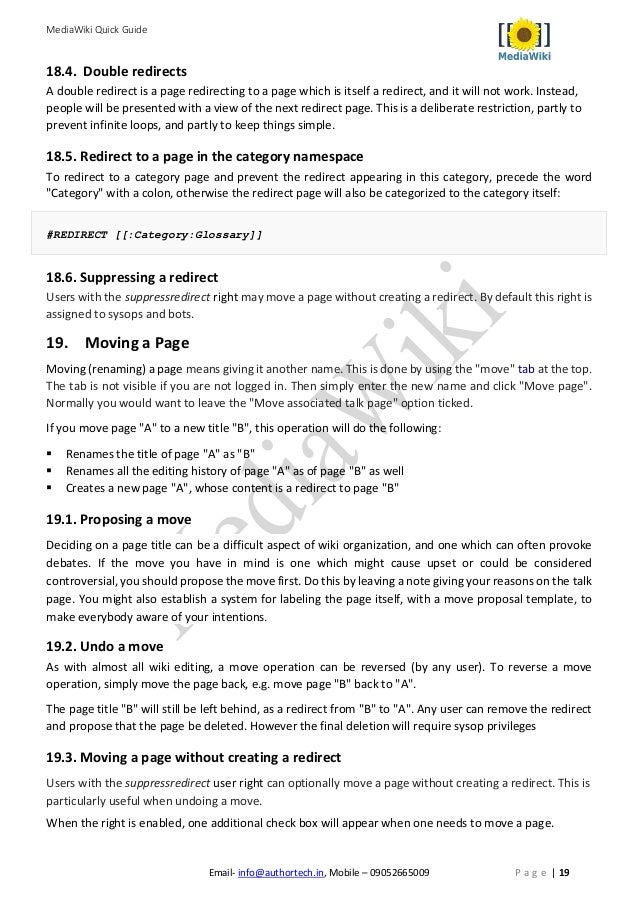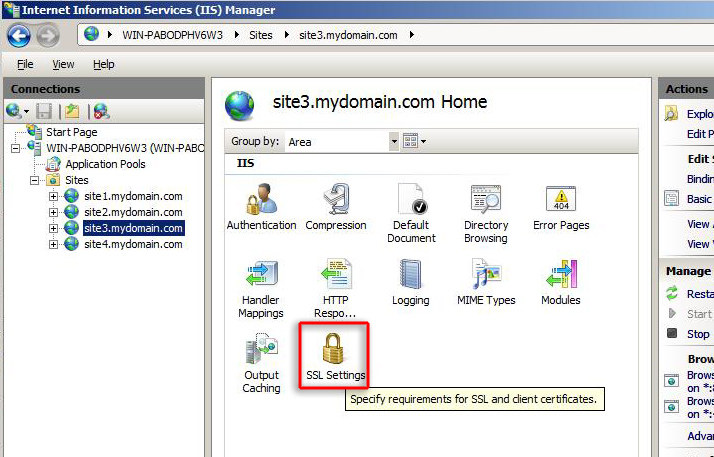

This is the MediaWiki default group/role name to which users will be mapped. OPTIONAL - Enter the Attribute Name that contains MediaWiki Last Name.Įnter the Attribute Name that contains MediaWiki Group/Role. OPTIONAL - Enter the Attribute Name that contains MediaWiki First Name. Use NameID if Username is in Subject element. Use NameID if Email is in Subject element.Įnter the Attribute Name that contains MediaWiki Username. If you want to restrict access to only registered users, set this to false.Įnter the Attribute Name that contains MediaWiki Email. Set this to true if you want to auto create users.
MEDIAWIKI REDIRECT UPDATE
Set this to true if you want to update user with incoming attributes whenever user logs in

Set to true if miniOrange is broker for another IDP. Open the certificate in Notepad and copy/paste the entire content here. Įnter the SAML Login URL or ACS(Assertion Consumer Service) URL of IDP here. miniOrangeĮnter the Issuer/Entity ID of IDP here. Entity ID, Single SignOn Service Url, Certificate Fingerprint) and save it.Įnter the name of the IDP here. # the URL where MediaWiki is hosted and '/extensions/SamlSingleSignOnAuth/' can be appended to it. # OPTIONAL - Set this to override $wgServer as site URL in the extension. # Auto create user if the user does not exist # Set this to true if you want to update user with incoming attributes whenever user logs in # Set true if Assertion is signed, set true by default # Set true if Response is signed, set false by default # OPTIONAL - Enter Relay State if applicable # Only set to true if SAML is brokered through miniOrange

$wgMoSamlX509CertDesc = '-BEGIN CERTIFICATE. $wgMoSamlLoginBindingType = 'HttpRedirect' Two possible values - HttpRedirect and HttpPost # Enter SAML Login URL or ACS(Assertion Consumer Service) URL here Require_once "extensions/SamlSingleSignOnAuth/SamlSingleSignOnAuth.php" WfLoadExtension( 'SamlSingleSignOnAuth' )
MEDIAWIKI REDIRECT CODE
MEDIAWIKI REDIRECT ZIP
Download the miniOrange SAML 2.0 SSO extension zip for MediaWiki.Click on the Download Certificate button to download the metadata.xml file which you will require in Step 2.Here you will see 2 options, if you are setting up miniOrange as IDP copy the metadata details related to miniOrange from the 1st section, if you already have an external IDP or User Store (OKTA, AZURE AD, ADFS, ONELOGIN, GOOGLE APPS) you should get the metadata from the 2nd Section as shown below.Click on Show SSO Link to see the IDP initiated SSO link for Mediawiki. Click on Metadata to get metadata details, which will be required later.Search for your app and click on the select in action menu against your app.Get IdP Metadata Details to upload to Mediawiki: To upload respective app logo for a Custom SAML App, click on Upload Logo tab.In the Attribute Mapping tab configure the following attributes as shown in the image below.Enter the SP Entity ID or Issuer : /extensions/SamlSingleSignOnAuth/.Search for Mediawiki in the list, if you don't find Mediawiki in the list then, search for custom and you can set up your application via Custom SAML App.In Choose Application Type click on SAML/WS-FED application type.Go to Apps and click on Add Application button.This can be accomplished by having a wiki administrator hide the username from public view, both on the initial revision to the page and in the Page Creation log.MiniOrange provides user authentication from various external sources, which can be Directories (like ADFS, Microsoft Active Directory, Azure AD, OpenLDAP, Google, AWS Cognito etc), Identity Providers (like Shibboleth, Ping, Okta, OneLogin, Ke圜loak), Databases (like MySQL, Maria DB, PostgreSQL) and many more.įollow the Step-by-Step Guide given below for Mediawiki Single Sign-On (SSO) 1. XTools reads directly from the live database, thus removing the relevant data from the public database is the only way to hide it. XTools has no way of knowing whether a deleted page was a redirect or not, as it cannot see the deleted content itself. In the list of pages, you can hover over the ' Deleted' text to see the administrator's reason for deleting the page.Īlso note that deleted pages may have been redirects. XTools has no automated means of knowing why a page was deleted, and whether or not it was due to wrongdoing by the user. Please note that if a user has any deleted pages, this is not necessarily bad. This sometimes causes pages to appear as if the user created them, when in reality they only created a redirect that later someone else turned into an article. Due to limitations with MediaWiki, XTools cannot efficiently determine whether a page was a redirect when it was first created.


 0 kommentar(er)
0 kommentar(er)
